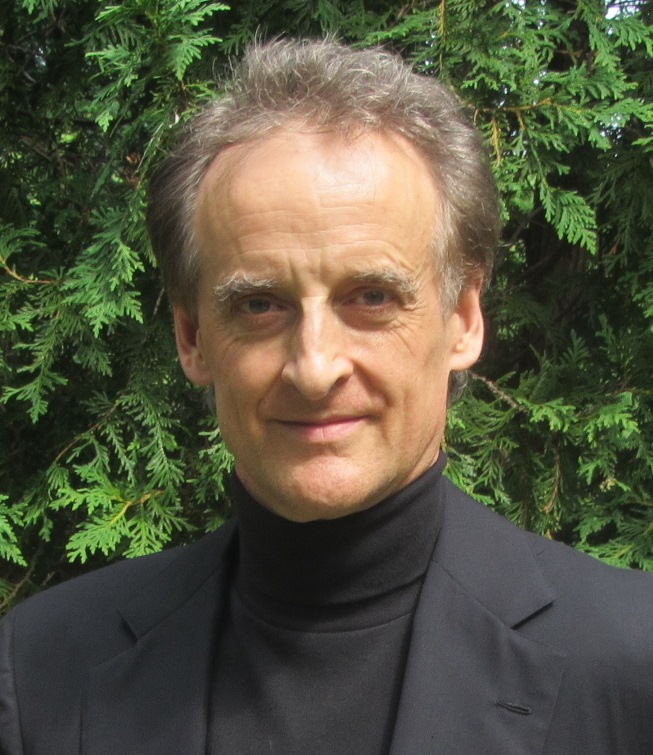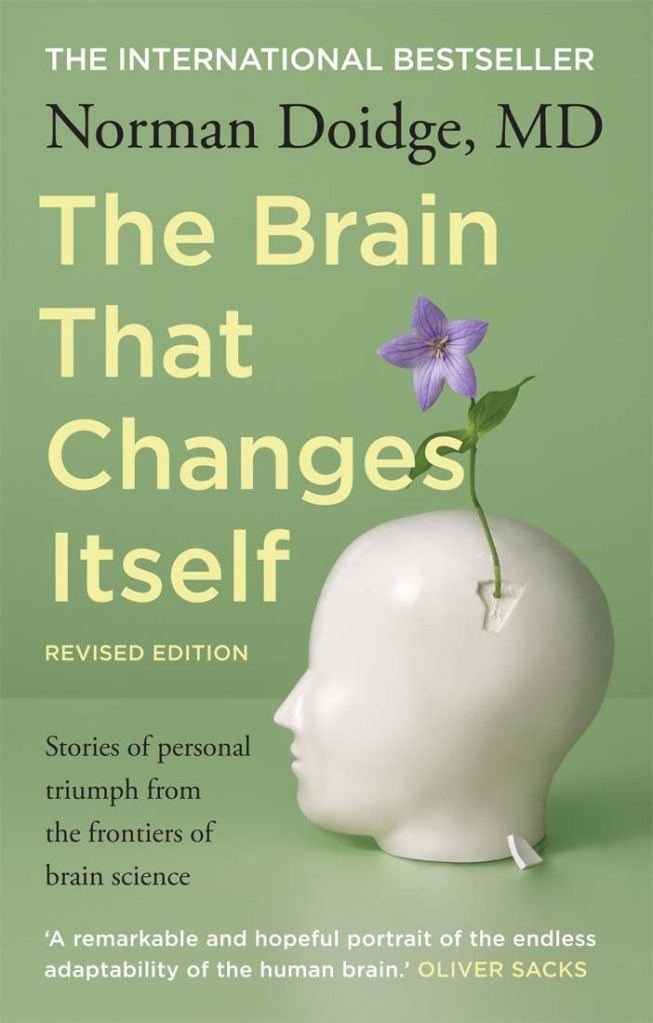 On the rainy evening of September 27, 1999, Dr. Clark Elliott was en route to DePaul University to deliver a lecture when his car was rear ended at a Morton Grove stoplight. Shaken but seemingly uninjured, Elliott continued on to DePaul’s campus unaware he’d suffered a concussion that would dramatically alter his life. In his remarkable new memoir The Ghost in My Brain: How a Concussion Stole My Life and How the New Science of Brain Plasticity Helped Me Get It Back, Elliott details the harrowing effects of his concussion along with his remarkable recovery almost 10 years later with the help of two cutting-edge Chicago doctors. This Monday, November 7th you can hear Dr. Elliott discuss The Ghost in My Brain when he visits EPL’s 1st Floor Community Meeting Room at 7 p.m. In anticipation of his visit, we recently spoke with him via email about the debilitating concussion symptoms he fought to overcome, brain plasticity, the groundbreaking work of Drs. Donalee Markus and Deboray Zelinsky, and the reasons he wrote his book.
On the rainy evening of September 27, 1999, Dr. Clark Elliott was en route to DePaul University to deliver a lecture when his car was rear ended at a Morton Grove stoplight. Shaken but seemingly uninjured, Elliott continued on to DePaul’s campus unaware he’d suffered a concussion that would dramatically alter his life. In his remarkable new memoir The Ghost in My Brain: How a Concussion Stole My Life and How the New Science of Brain Plasticity Helped Me Get It Back, Elliott details the harrowing effects of his concussion along with his remarkable recovery almost 10 years later with the help of two cutting-edge Chicago doctors. This Monday, November 7th you can hear Dr. Elliott discuss The Ghost in My Brain when he visits EPL’s 1st Floor Community Meeting Room at 7 p.m. In anticipation of his visit, we recently spoke with him via email about the debilitating concussion symptoms he fought to overcome, brain plasticity, the groundbreaking work of Drs. Donalee Markus and Deboray Zelinsky, and the reasons he wrote his book.
Evanston Public Library: How soon after your car accident did you realize something was seriously wrong? In hindsight, are you surprised the officers and paramedics allowed you to leave to go to your lecture given the confusion you describe experiencing?
Clark Elliot: This is the insidious thing about brain injuries: we often don’t realize that sometimes horrific changes have taken place. The cognitive machinery necessary for understanding that deficits have occurred are sometimes exactly those parts of us that have gone missing. For example, at times I would lose the right side of my world in a form of what we call neglect. But if you asked me to describe what was wrong I would have had difficulty; I couldn’t conceive of the right-hand side of my world in a way that would let me know it was gone.
From the moment of impact strange things began happening to me, but I couldn’t understand it. After all, I looked fine. What could be wrong? It wasn’t until several days later—when I finally figured out after fifteen minutes of intense concentration that I had put my shoes on the wrong feet six hours earlier—that I finally went to emergency room.
I can’t blame the paramedics. I was articulate and told them I couldn’t let my students down. Not knowing any better myself, I insisted they let me go, so they did.
 EPL: Can you describe the symptoms with which you struggled over the next eight years? What was the impact on your professional and personal life?
EPL: Can you describe the symptoms with which you struggled over the next eight years? What was the impact on your professional and personal life?
CE: I was a typical concussive. I lived in a foggy netherworld of highly compromised cognitive abilities. I was fine until I had to think, then fell off a cliff after only a few minutes. I often would get stuck such that my body wouldn’t move at all. I couldn’t understand time or calendars. Simple activities like balancing my checkbook would leave me in a tub full of ice water trying to deal with the head pain. I couldn’t make decisions. I often couldn’t walk. I could only do one thing at a time. I couldn’t understand what people said to me, and I couldn’t read for six months. The visual overload from grocery shopping would leave me debilitated for days. Loud sounds would leave me on the floor covering my ears. I was just able to keep my job using many creative workarounds. Toward the end, after eight years, I couldn’t keep going and was on the verge of losing my job, my house, custodianship of my children, and becoming a ward of the state.
EPL: How did you begin working with Dr. Donalee Markus and Dr. Deborah Zelinsky? For the layman, what is brain plasticity?
CE: In short, I was very, very lucky. A woman who was helping me organize one last search for help ran into one of Donalee Markus’s clients at a party. The woman raved about Donalee’s work. I called her the next day, and this began my remarkable return to health.
Brain plasticity is the idea that much of the brain is general purpose in nature, and that a healthy part of the brain can be retrained to take over for tissue that has been damaged.
EPL: Can you describe how Dr. Zelinsky’s prism glasses and Dr. Markus’s puzzles work? How did they aid in your recovery, and how long was it before you started noticing improvements?
CE: There are three key elements to understanding how these remarkable treatments work. First, it is important to know that we are only starting to learn about how the brain works—from a computational standpoint it is roughly equivalent to fifty million desktop computers and we know very little about its actual design. Essentially, we have been living in the dark ages when it comes to treating brain injury. Second, we have to realize that fifty to eighty percent of the brain gets involved in visual/spatial processing at some point. This kind of processing is at the very core of what makes us human, allows us to manipulate the symbols of thought, and allows us to understand language. Lastly, this marvelous device—the human brain—is designed to reconfigure itself. But sometimes it needs a little jump start to get pointed in the right direction.
So putting this together: Using sophisticated developmental optometric testing over the course of several hours Deborah Zelinsky found where my visual/spatial pathways were compromised, and where there was healthy tissue with which we could work. Then, using prescription eyeglasses (in my case, with prisms built into them) she redirected the light coming into my retinas to emphasize neural activity in different (healthy) parts of my brain along what are known as the optic radiations from the retinas to the visual cortex. We can think of this as cutting dirt roads through healthy tissue in my brain.
 Dr. Markus then emphasized these pathways by having me work paper and pencil brain puzzles, continually rehearsing visual/spatial processing along these new pathways, turning the dirt roads into the superhighways that would once again allow me to work as a professor in artificial intelligence. I felt like I was a six-month old baby re-learning how to interact with the world.
Dr. Markus then emphasized these pathways by having me work paper and pencil brain puzzles, continually rehearsing visual/spatial processing along these new pathways, turning the dirt roads into the superhighways that would once again allow me to work as a professor in artificial intelligence. I felt like I was a six-month old baby re-learning how to interact with the world.
This miracle of the brain reconfiguring itself can take place in a sometimes very short period of time. By my estimate I was about seventy percent improved within the first month—and this is after almost a decade of no improvement at all.
EPL: Do you consider yourself fully recovered?
CE: I was fully recovered after two years, and I am completely recovered in all ways. In fact, because along the way we treated some lifelong minor attention difficulties, I am better than ever: significantly calmer and more focused.
EPL: What motivated you to write The Ghost in My Brain? Can you share the meaning behind the title? What would you like readers to take away from your book?
CE: After ten years I was very ready to just move on and get back to my life. I’d been given this great and unexpected gift. But I thought: there are six million other people in the U.S. alone living with the long-term effects of brain trauma. For some unknown reason I took 1,200 pages of detailed notes of my experience. I am one of the very few who ever recovered, and I knew exactly how and why I recovered. My heart just went out to all of those still living in the nightmare world of brain injury. So I wrote the book with the hope that these techniques, based on the modern ideas of neuroplasticity, might become better known. And this is science: at my website I give references to more than 700 research papers relevant to neurodevelopmental optometry. The book has been endorsed by – among others – Dr. Daniel Federman, the past president of the American College of Physicians and dean emeritus at the Harvard School of Medical Education. But good science sometimes takes decades to migrate into practical use. I wanted to speed this process along.
The Ghost is a reference to a remarkable moment outside my office at DePaul University. About a month after I began treatment the ghost of who I had once been—and who I thought I would never see again in this lifetime—returned.
In my experience there are two classes of readers. For those that have personal knowledge of just how difficult brain injuries can be, I want them to know they are not alone, that they are not crazy, and that all of the bizarre things that are happening to them have a normal and explainable cause. And, of course, that they may be treatable, despite what their doctors tell them. For those who don’t have personal knowledge of brain injury, I hope they will gain some compassion and understanding for their wives, husbands, parents, children and friends that do.
I would also like all readers to gain some appreciation for the true magnificence of the human brain and its profound capabilities, many of which are presented in the book.
EPL: Can you suggest other books and resources for readers who want to learn more about concussions and brain plasticity?
CE: I must absolutely point to two works of Norman Doidge, M.D.: The Brain that Changes Itself and The Brain’s Way of Healing. My website has many pointers to other resources, including the Neuro-Optometric Rehabilitation Association, and the websites for Drs. Markus and Zelinsky.
Interview by Russell J.
